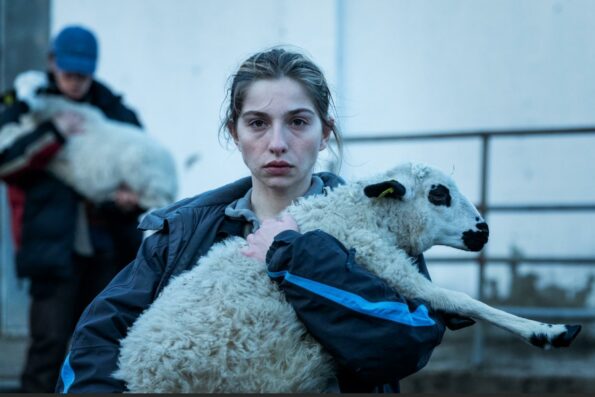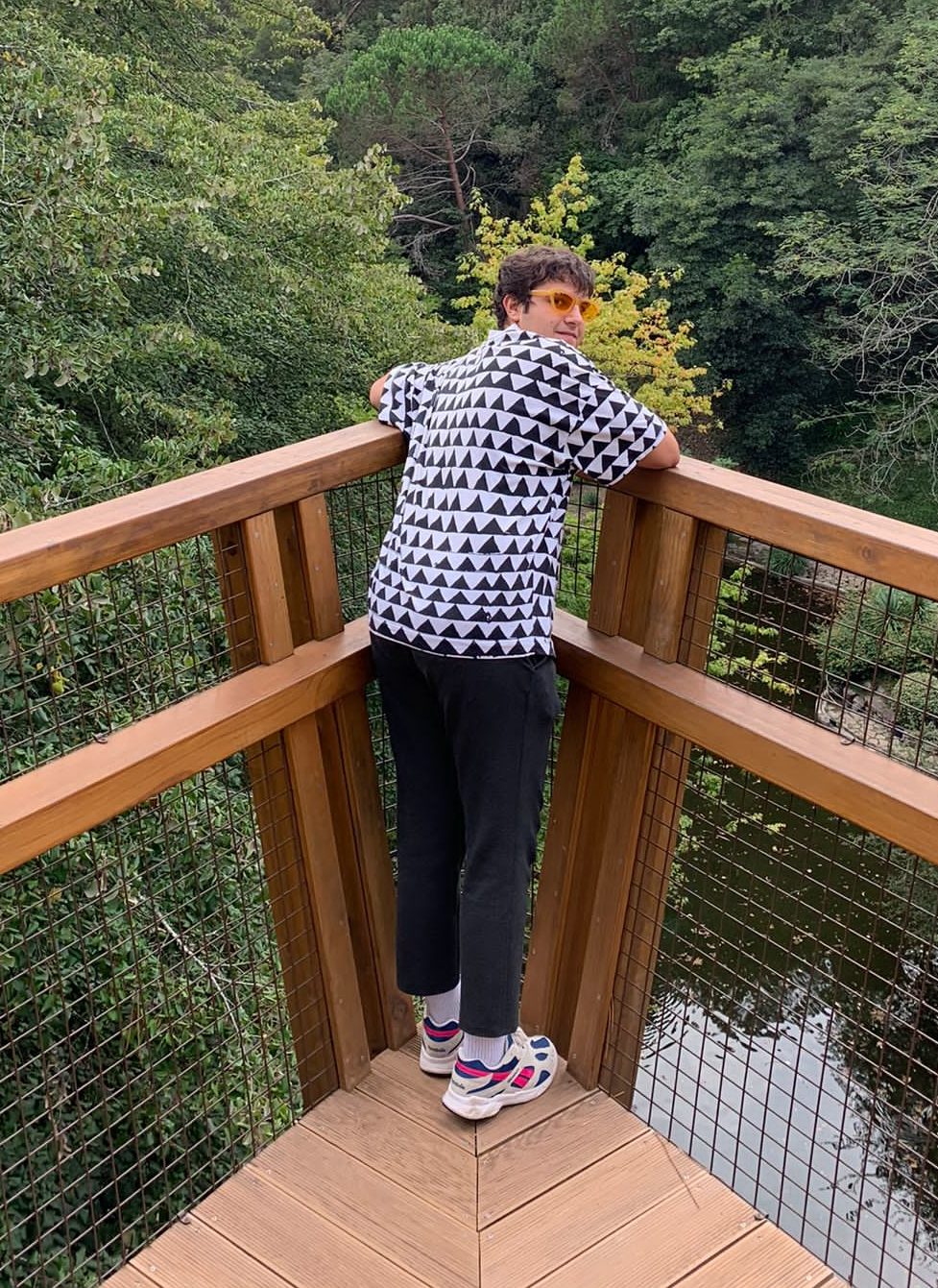Search
To search for an exact match, type the word or phrase you want in quotation marks.
A*DESK has been offering since 2002 contents about criticism and contemporary art. A*DESK has become consolidated thanks to all those who have believed in the project, all those who have followed us, debating, participating and collaborating. Many people have collaborated with A*DESK, and continue to do so. Their efforts, knowledge and belief in the project are what make it grow internationally. At A*DESK we have also generated work for over one hundred professionals in culture, from small collaborations with reviews and classes, to more prolonged and intense collaborations.
At A*DESK we believe in the need for free and universal access to culture and knowledge. We want to carry on being independent, remaining open to more ideas and opinions. If you believe in A*DESK, we need your backing to be able to continue. You can now participate in the project by supporting it. You can choose how much you want to contribute to the project.
You can decide how much you want to bring to the project.

Galicia is an animist space, a remote territory in the northwest of the peninsula where the soul finds refuge in nature and which could be thought of as the mecca of pantheism. A coast compressed by the overwhelming force of an ocean that continually crashes on the granite used to build its houses. On slow winter mornings its heavy blanket of mist creates a nostalgic atmosphere. It has a strong oral tradition linked to the legends of Samaín, the Santa Compaña and the tales of wolves and mysteries collected in the writing of Ánxel Fole, the only literature that does not have a narrator. These characteristics have been transferred to 20th century culture through Arthurian cultural nationalism supported by some members of the Nós group, such as Vicente Risco and Álvaro Cunqueiro.
The turn of the century and the entrenchment of globalization diverted attention towards paths that were alien to oral Galician culture. Costumbrismo was viewed as an obsolete vision, and cross-border problems, without knowing that they were also local, grew popular. In the crisis of this globalist model, a group of young filmmakers who had grown up listening to their grandmothers and grandfathers tell legends, created a new language. Within the obsession of naming everything, it has been called Novo Cinema Galego (alluding to British Free Cinema or the Nouvelle Vague). This movement formed part of a long line of creators who had made claims to the land, with artists such as Isaac Díaz Pardo in the laboratory of Formas de Sargadelos, Milladoiro and Emilio Cao in music, and the agrarian poetry of Lois Pereiro.
These artists created a cinema that represented a return home, Galicia as the space for constant dialogue, in the words of Diana Toucedo. This current of contemporary costumbrismo has overtaken the main independent festivals and has put the Northwest on the map, a clear example that stories can be local and can exist within the imagination of other countries. Nothing new. The Novo Cinema Galego (NCG) was born as a movement promoted by directors who had studied in European capitals and later shifted their gaze to peripheral lands. Their narratives move between fiction (Lúa vermella, Trinta lumes) and reality (Longa Noite, O que arde). The work impregnates the aesthetics of the earth into each frame, transmitting smells, flavors and vitality.
A film exercise that seeks to unite the Galician population and create an open circle in which local stories are promoted, a logical consequence as Galicia is the second region with the most emigrants in Europe. The content of these works seeks to reconnect society with its means of expression, cinema. Oliver Laxe is one of the most visible luminaries of this movement, with films such as Todos vós sodes capitáns, Mimosas and O que Arde. In this last film, he evokes the Galician rural essence. His yardstick for measuring success represents well the ideals of the NCG. Oliver is proud when someone tells him or writes to him saying that his film reminded them of their grandmother’s way of cooking or his grandfather’s way of talking to cows, a kind of success that’s very different from box-office returns or international festival awards. Taking advantage of his presence at the Goyas and in Cannes, Laxe revindicates the ability of rural life to build its own film language. In coherence with his discourse, he has set up a series of activities that promote the connection of cinema with the countryside, and has made his grandparents´ home a space for artistic residencies for young creators.
The NCG has set itself the urgent task of reforming the Galician visual panorama, from the absence of cinemas that promote independent films (in A Coruña, the second most populous city in Galicia, there is not even one private movie theater that shows independent films) to the non-existence of film schools in the territory. Through its work, the movement reveals the cracks in the Galician cultural fabric. A sign of this is that up until recently Galicia was represented only through national productions, which always repeated the same clichés. Reflected as a wild region of sharp contrasts and loneliness in the center, or of criminals and daring drug traffickers in the south.
As Bestas (2022), the latest feature film by acclaimed director Rodrigo Sorogoyen, represents a story of intrigue in which the weather shapes the uncouth mentality of the characters, a story loaded with reactionary stigmas. The landscape shapes people’s minds, just as Chekhov had depicted, but in a less subtle way. It is the result of a rural cinema made for city dwellers. The Galician protagonists appear as beasts devoid of sensitivity and reasoning. The script highlights discussions that are born and die many times in the cities and then transferred and imposed on ranchers and farmers. The ecological, renewable energies or bucolic idealization are perspectives that Sorogoyen tries to wed with rural society.
The feature film is also an example of visual power and suspense, a central conflict that already resided in Benjamin’s thought when he criticized cinema as a waste of aesthetics without content. Cinema has to establish ties to society, creating a constant relationship that, if it does not occur, only widens the tentacles of the dominant Hollywood model. This feature film could have been shot in Navarra, Asturias, Extremadura or Catalonia, but Galicia seems to fit better into a rural western style. Using a territory with such a strong oral and written tradition as mere decoration does not seem right at all.
The three independent films that have traveled to major European festivals are Cinco Lobitos, Alcarràs and As Bestas, box office successes and variants of neo-costumbrismo that have flooded international competitions. This represents a great advance for the periphery, in need of telling its own stories. The dilemma consists of whether this trend, which is already moving away from independent productions due to their commercial impact and high budgets, will be able to widen the path so that new languages can be used. Should they simply propose new narratives or reform them?
The NCG will continue as a reference that continues the trend of New Lebanese Cinema, the Romanian New Wave or the New Asian Cinema Current, as re-founders of languages. A step above what Free Cinema or social realism had started, conceiving cinema as an agitator of consciences. Borders must be pushed to go further, that is, the translation of films into tangible elements, such as the organization that Laxe has created in Os Ancares. The materiality of the projects is what will build an academy by relating the spectator with the creator, in which the genesis and maintenance of oral and written tradition will also be favored and transferred to filmic language. With the clear objective that the role of the filmmaker and the spectator (whether he be a fisherman, an electrician or a lawyer) be similar or at least close. The distance that art had erased between the public and films in the 1970’s is ready to take over the big screen.
(Featured Image: Still from As Bestas (2022) by Rodrigo Sorogoyen)

Santiago Concheiro. Between the limits where art ends and society begins… Or was it the other way around? Passionate about the Humanities and artistic proposals that lead to social change. Santiago Concheiro has a degree in International Relations and is currently finishing Art History.
"A desk is a dangerous place from which to watch the world" (John Le Carré)